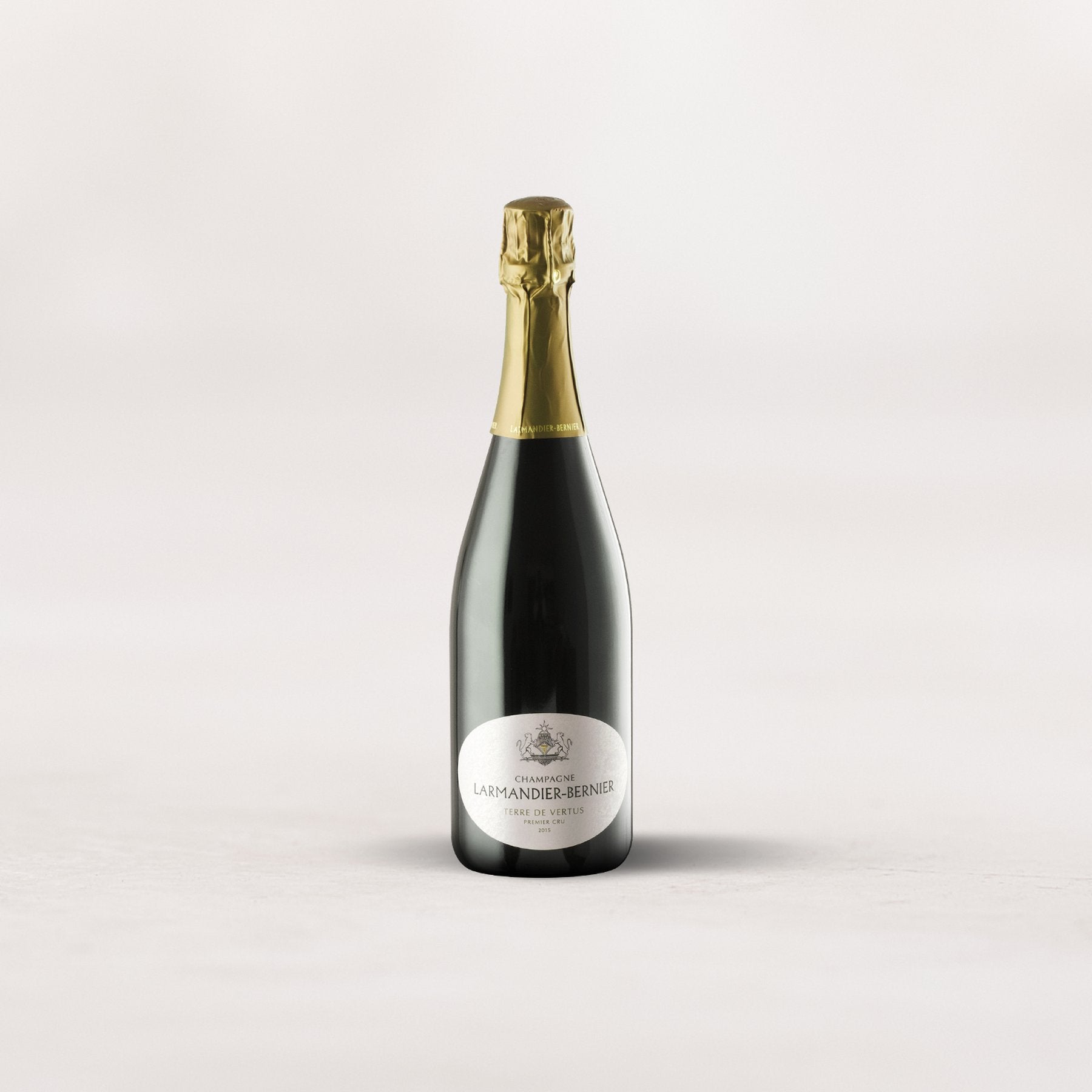I have no clever lead-in to today’s offer. There is no flashy label or cutesy backstory. Larmandier-Bernier’s 2015 “Terre de Vertus” simply is what it is: an engaging, phenomenally complex, makeup-free Blanc de Blancs Champagne.
Produced by one of the most respected biodynamic growers in the entire region and meticulously shepherded through every stage of its 7+ year life, it rockets across your palate with almost inconceivable mineral depth. This genuinely moving bottle of Chardonnay is crammed with powerful layers of orchard fruits and flowers, all while somehow maintaining a pristine sense of freshness, delicacy, and poise. It’s a wine whose styling could serve as a benchmark for an entire category; this is what truly great, unmanipulated Blanc de Blancs tastes like. There are no bells, no whistles, no glitz here. There’s just one of the best practitioners of artisanal Champagne operating at the very peak of his powers. How lucky we are to experience it!
The Larmandiers have farmed vines in the Côte des Blancs since before the French Revolution, and they’re the rare case of a small producer having made and sold their own wine long before the contemporary “grower Champagne” movement took flight. But it was only in 1971, when Philippe Larmandier married Elisabeth Bernier, that the estate as currently constituted was formed. Elisabeth and Philippe combined their family’s holdings to put together an astounding collection of Premier and Grand Cru vineyards in the villages of Cramant, Chouilly, Oger, Avize, and Vertus. Their son Pierre took over in 1988 and almost immediately propelled quality to the next level. He converted the vineyards to organics in 1992, and went full-on biodynamic seven years later. Their best plots, like those comprising “Terre de Vertus,” are even farmed without tractors, utilizing literal horsepower instead.
As the name implies, “Terre de Vertus” hails entirely from the Premier Cru village of Vertus. This is the village the Larmandiers call home, the southernmost in the Côte des Blancs. Here, Chardonnay takes on a more powerful, fleshier cast while retaining the incisive cut derived from chalky soils. Pierre cultivates two plots for his home bottling, Les Faucherets and Les Barillers, both south-facing. He isn’t afraid of ripeness; lowering yields was one of the major changes he instituted when he took over, and he often picks a week or two later than his neighbors.
Most notably, he uses very little dosage, and in the case of today’s Brut Nature, none at all. It seems every young producer in Champagne forgoes dosage because it’s the “hip” thing to do. But Pierre (and myself) believes you have to work for the ability to do that in the vineyard; only the most meticulously farmed fruit naturally provides the weight and body to balance its high acidity. In the cellar, Pierre’s rigorous and transparent methods continue. Only indigenous yeasts are used, and very long lees aging takes place in old, large-format barrels. After disgorging today’s 2015 “Terre de Vertus” in the Spring of 2021, it was allowed to rest for an additional year in the cellar before official release.
To really let it strut its stuff, I recommend opening a Champagne as coiled and serious as “Terre de Vertus” a half hour or so before consuming and serving in Burgundy stems. In the glass, it pours a pale gold with streaks of silver and yellow. Smelling this is like strolling through an orchard perched atop a quarry: crushed rocks, sea salt, iodine, pear skin, creamed apple, hazelnuts, dried apricot, and fennel seed explode out of the glass. The palate is creamy and full-bodied, leaning into quince and pear before a wave of chalky acidity comes through to provide a scintillating, minute-long finish. This is as good as Blanc de Blancs gets, a masterclass in unbridled power without sacrificing any grace or lift. This is the bottle you’ll be measuring all others against for years to come!











